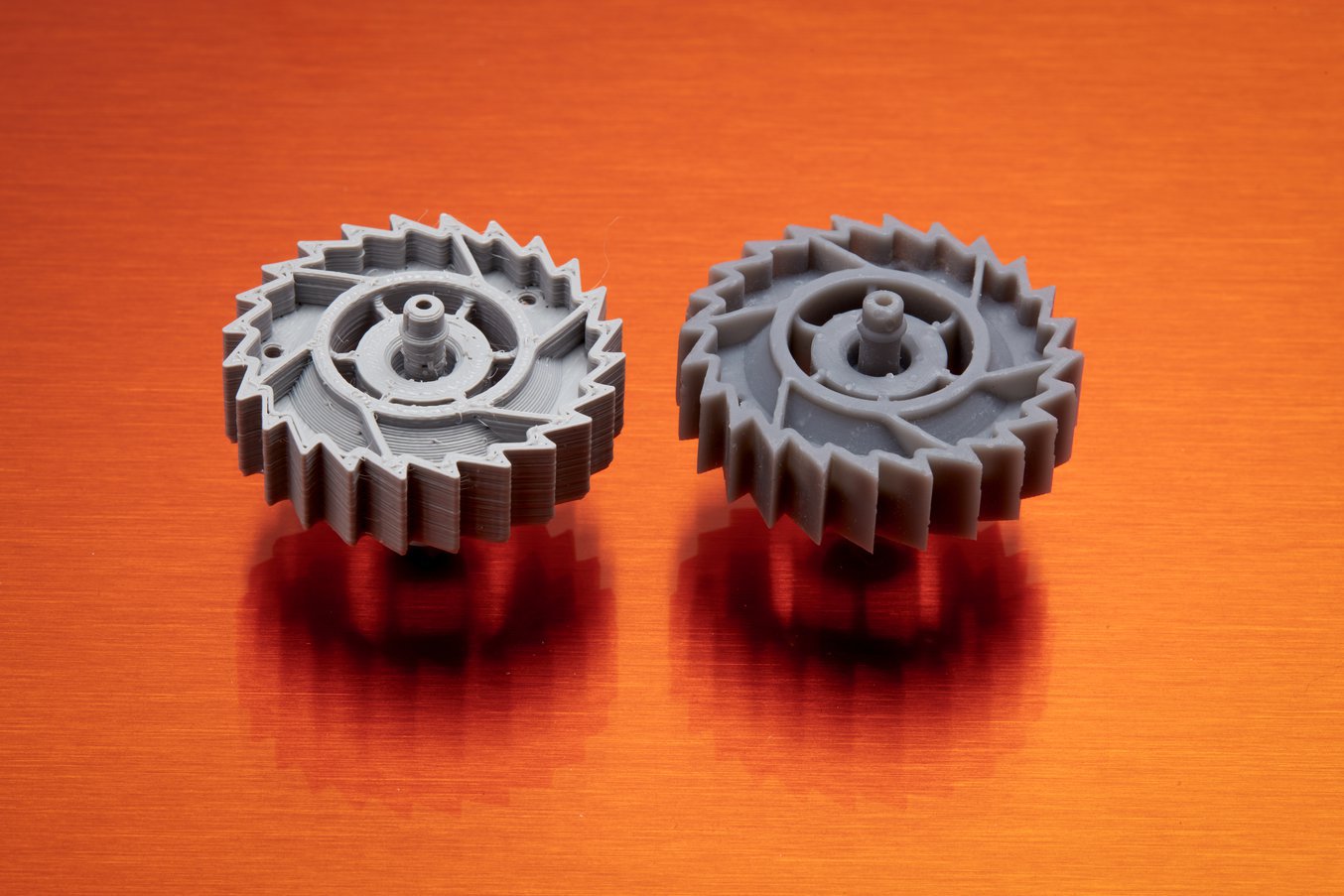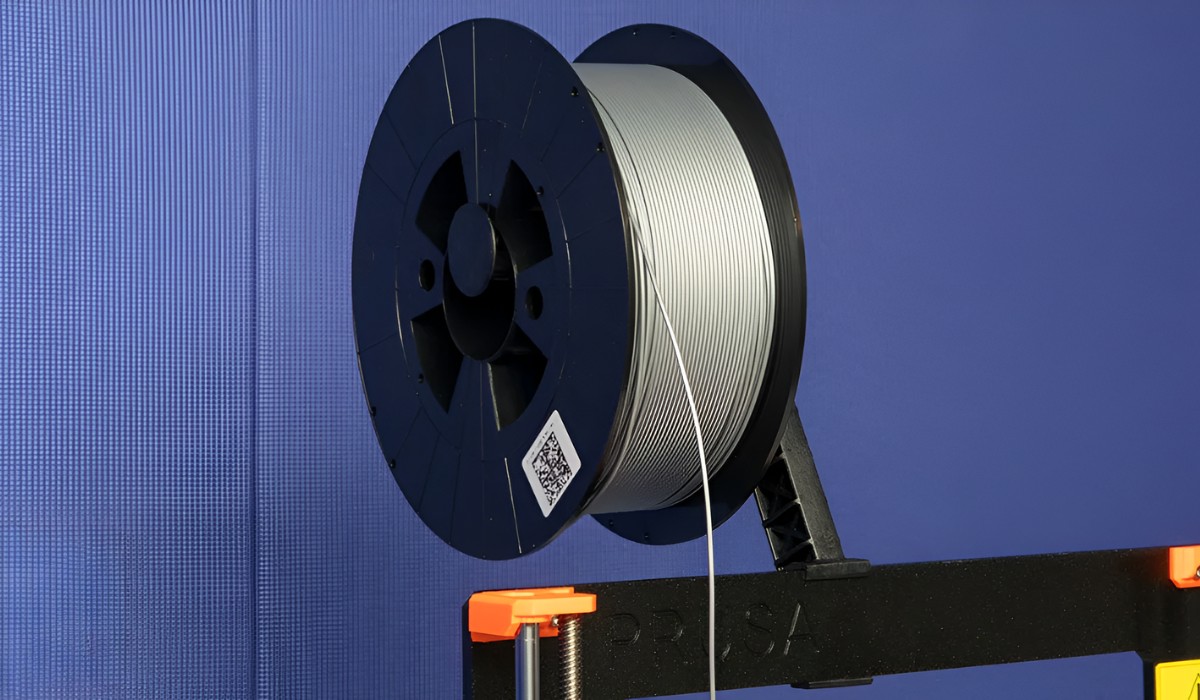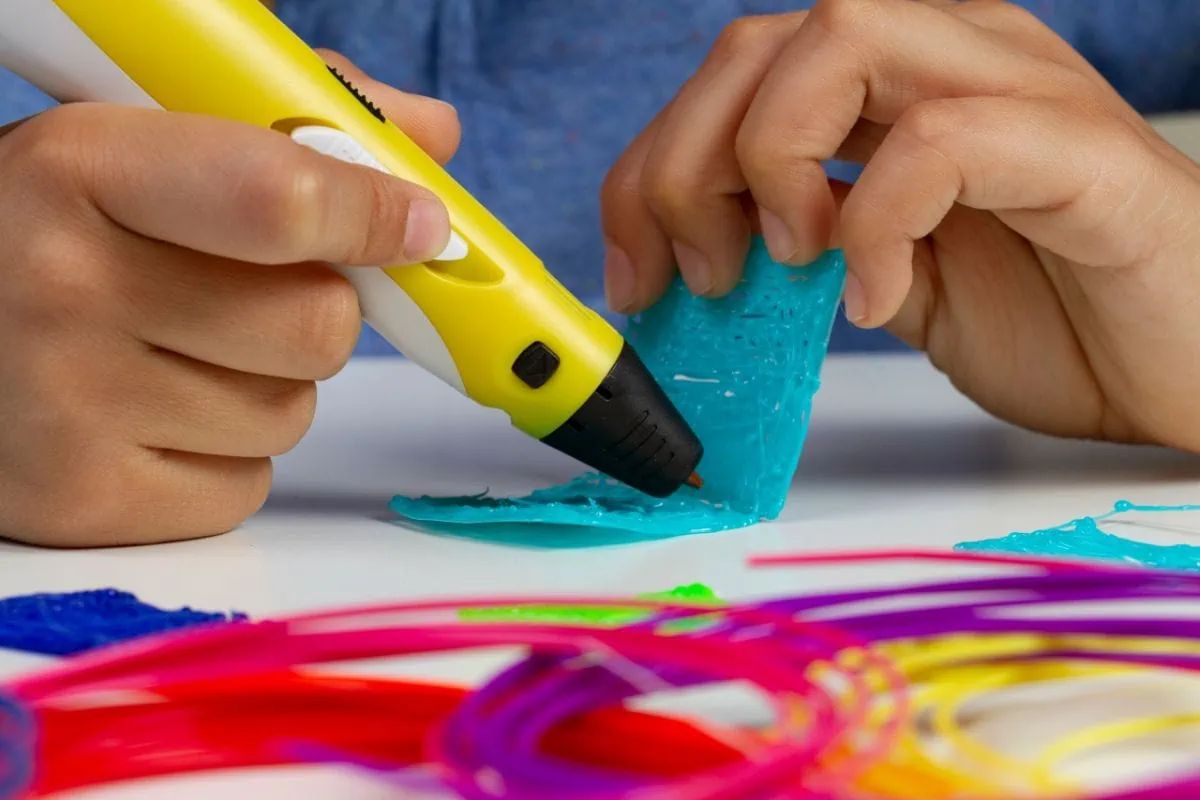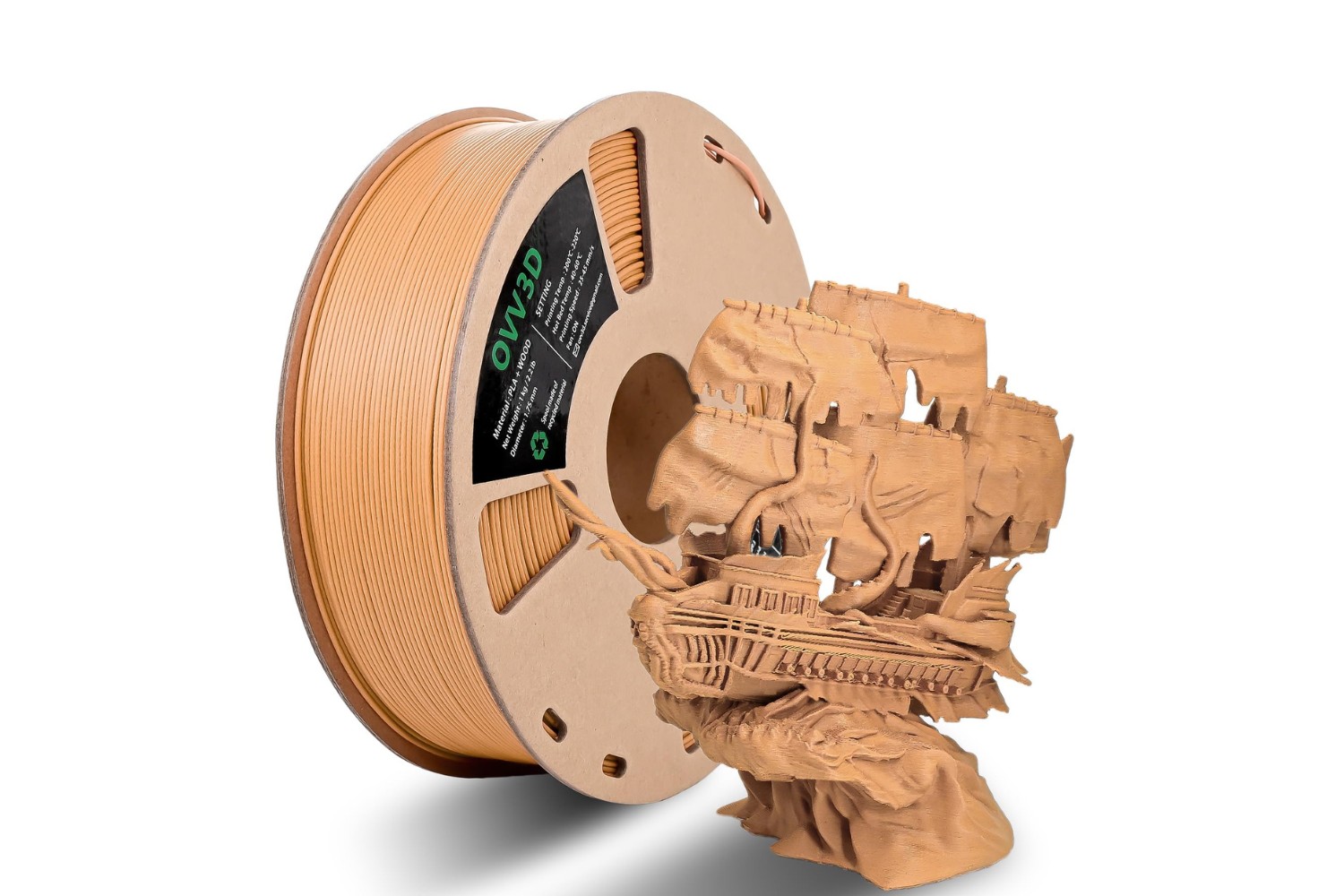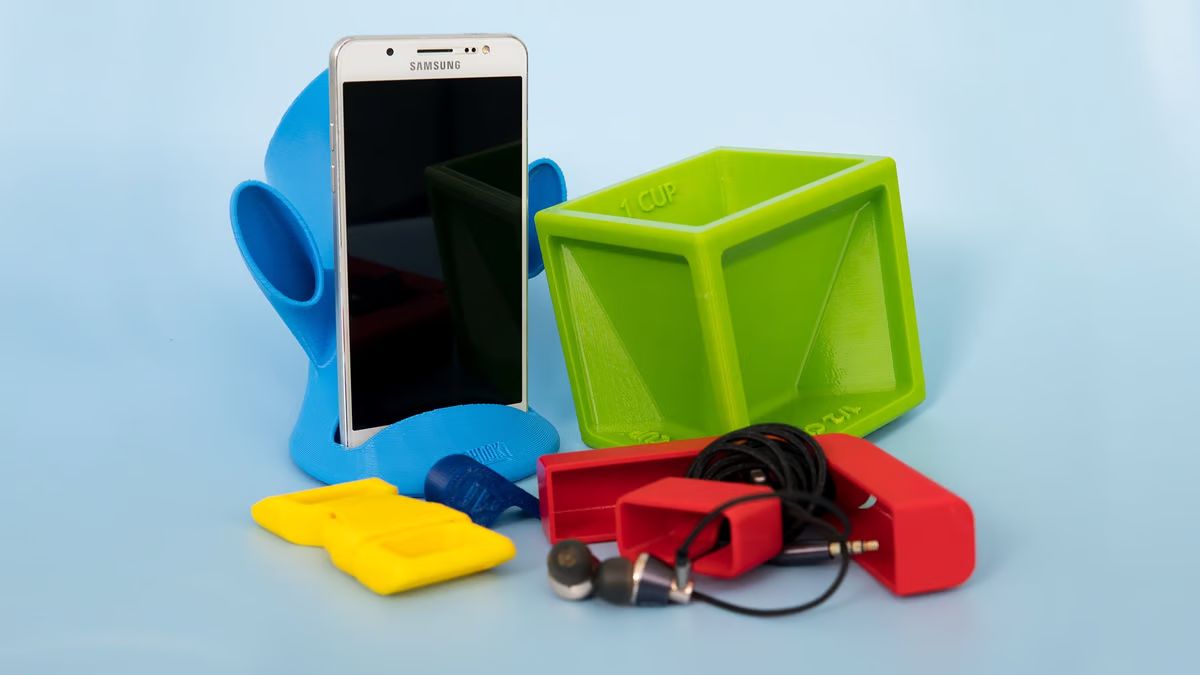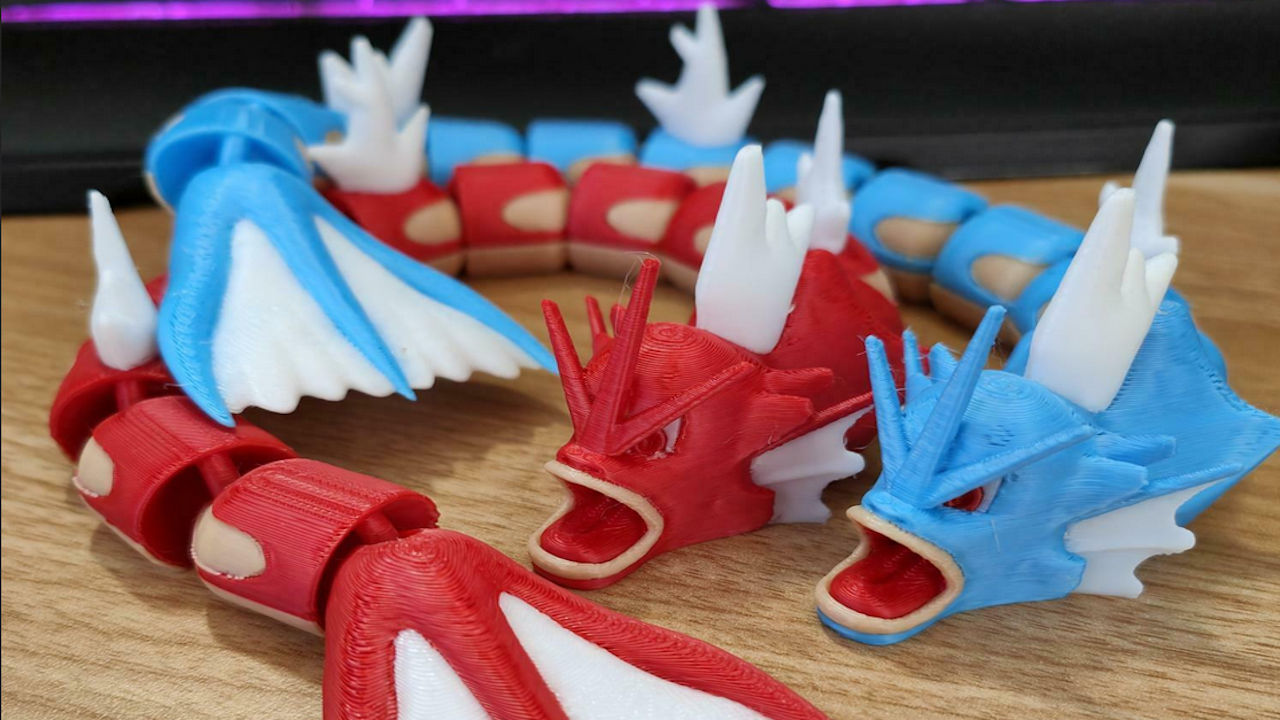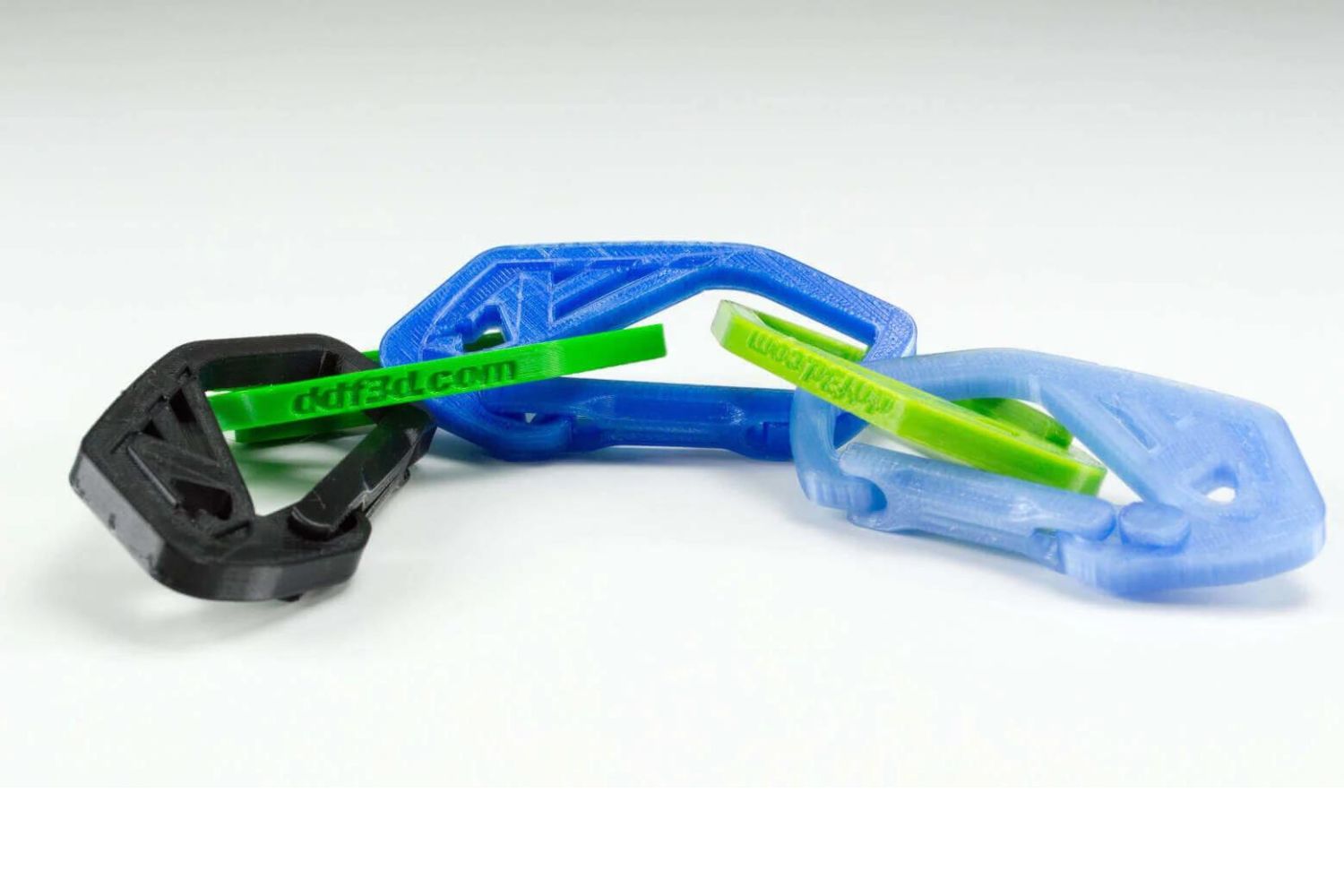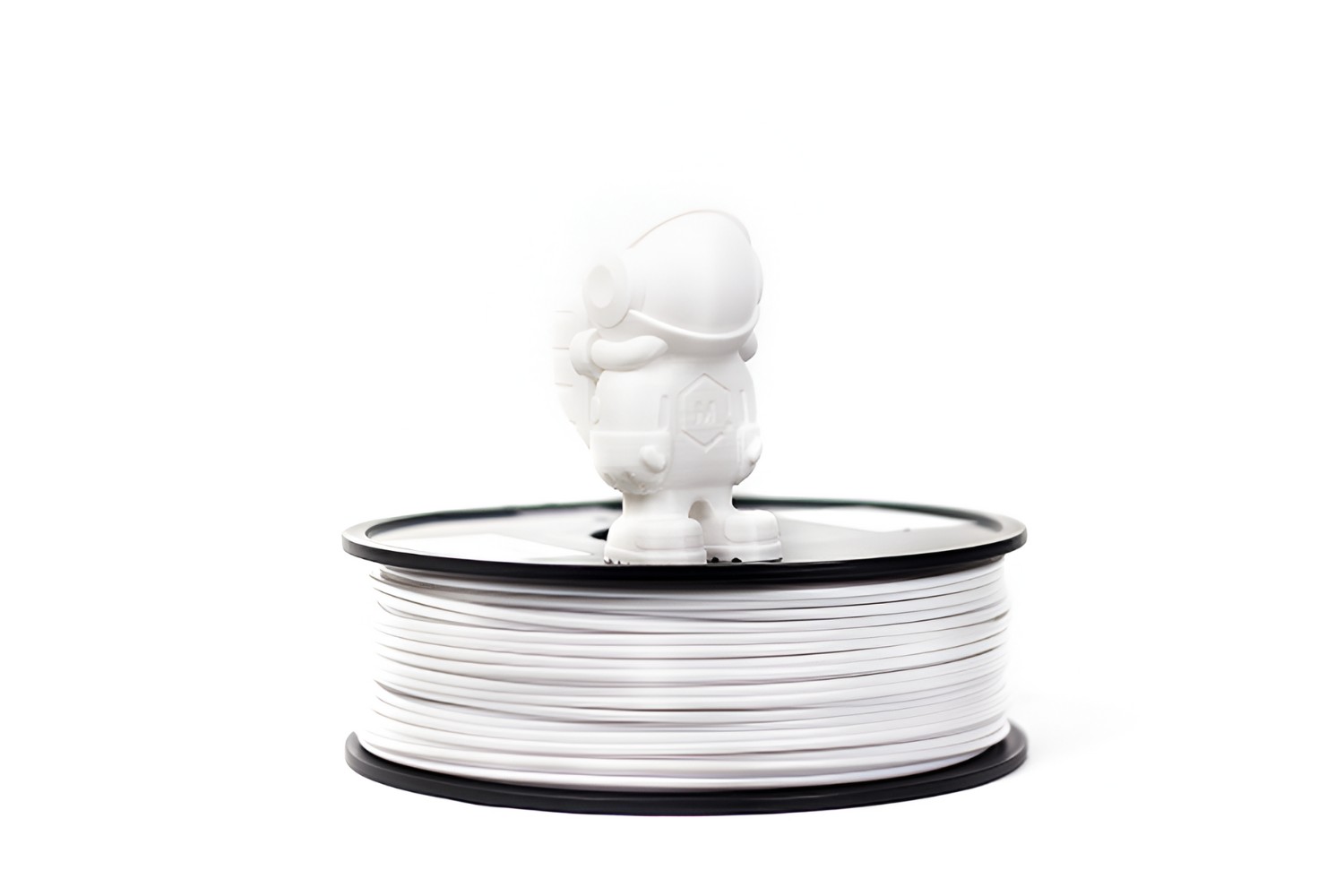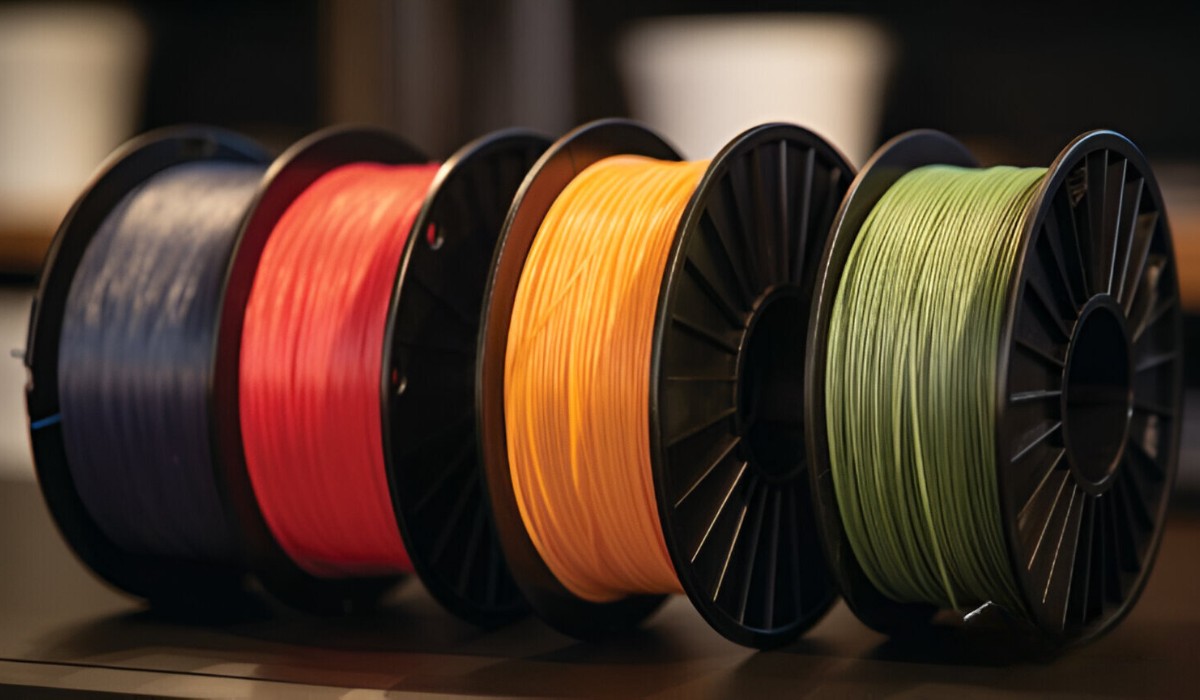Introduction
Welcome to the fascinating world of 3D printing, where innovation knows no bounds and the boundaries of creativity are constantly being pushed. In recent years, 3D printing has revolutionized the manufacturing industry, offering a wide range of possibilities for designers, engineers, and hobbyists.
One of the crucial aspects of 3D printing is tolerance, which refers to the level of accuracy and precision with which a 3D printer can reproduce a design. Tolerance plays a vital role in determining the quality and integrity of a printed object, especially when it comes to intricate and complex designs.
Understanding the concept of tolerance is essential for anyone involved in 3D printing. In this article, we will explore the topic of tolerance in 3D printing in detail, including the factors that affect it, the types of tolerance commonly encountered, and the challenges and limitations of achieving small tolerances.
We will also discuss strategies for enhancing tolerance in 3D printing, best practices for designing and printing with small tolerances, and the applications and industries that are impacted by the ability to achieve small tolerances in 3D printing.
Whether you are a professional in the field of manufacturing or simply a curious individual interested in the world of 3D printing, this article will provide you with valuable insights into the fascinating world of small tolerances in 3D printing.
Understanding Tolerance in 3D Printing
Before diving into the specifics of small tolerances in 3D printing, it is important to grasp the concept of tolerance itself. Tolerance refers to the allowable variation from a specified dimension or measurement in a design. In other words, it is the degree of leeway or margin of error within which a 3D printer can accurately reproduce a model.
When designing objects for 3D printing, it is vital to define appropriate tolerances to ensure that the final printed product meets the required specifications. If the tolerance is too tight, the printer may struggle or even fail to produce the desired results. On the other hand, if the tolerance is too loose, the printed object may lack the necessary accuracy and precision.
Tolerance can have a significant impact on the functionality and aesthetics of a 3D printed object. For functional parts, such as gears or hinges, it is crucial to have precise tolerances to ensure smooth movement and proper fit. In the case of aesthetic models, such as figurines or architectural prototypes, small tolerances can help achieve intricate details and smooth surfaces.
It is also essential to consider the intended use and requirements of the printed object when determining the desired tolerance. Different applications may demand different levels of accuracy and precision. For example, a prototype for testing purposes might require looser tolerances, while a final product for retail would need tighter tolerances to meet customer expectations.
Factors such as the type of 3D printer, the material being used, and the specific design all contribute to the achievable tolerance. FDM (Fused Deposition Modeling) printers, for instance, generally have larger tolerances compared to SLA (Stereolithography) printers, which can provide much finer details.
Understanding the capabilities and limitations of the 3D printer, as well as the properties of the selected material, is crucial in determining the appropriate tolerance for a particular project. It requires a balance between the level of precision needed and the constraints of the technology being used.
In the coming sections, we will explore the different types of tolerances encountered in 3D printing, discuss the minimum tolerance achievable by a 3D printer, and delve into the challenges and limitations associated with achieving small tolerances.
Factors Affecting Tolerance
Several factors influence the level of tolerance achievable in 3D printing. Understanding these factors is crucial for optimizing the print quality and ensuring that the final printed object meets the desired specifications.
1. Printer Hardware: The type and quality of the 3D printer play a significant role in determining the achievable tolerance. Different printer technologies, such as FDM, SLA, or SLS, have varying capabilities in terms of precision and accuracy. Higher-end printers with advanced features and better control mechanisms generally offer tighter tolerances compared to budget-friendly or entry-level options.
2. Print Bed and Stability: The stability of the print bed is vital for maintaining consistent tolerances across the entire print job. An unstable or uneven print bed can result in variations in the printed dimensions. Ensuring a level and properly calibrated print bed is crucial for achieving accurate and precise prints.
3. Materials and Filament: The choice of printing material and filament also affects the tolerance. Different materials have varying shrinkage rates and thermal properties, which can result in dimensional changes during the printing process. Understanding the characteristics of the selected materials and adjusting the design accordingly can help achieve the desired tolerance.
4. Design Considerations: The design of the object itself can impact the achievable tolerance. Factors such as wall thickness, overhangs, and intricate details can pose challenges for 3D printers. Designs with thin walls or complex geometries may require higher precision printing to avoid issues like warping or deformation.
5. Slicing and Software: The software used for slicing the 3D model into printable layers also influences the tolerance. Slicer settings such as layer height, print speed, and cooling can affect the overall accuracy and precision of the print. Optimizing these settings based on the requirements of the print can help achieve better tolerance.
6. Environmental Conditions: Environmental factors such as temperature and humidity can impact the printing process and ultimately affect the tolerance of the final print. For example, high humidity levels can lead to filament absorption of moisture, resulting in dimensional changes during printing. Maintaining stable environmental conditions can help mitigate these effects.
By carefully considering and managing these factors, it is possible to optimize the tolerance and achieve high-quality prints with accurate and precise dimensions. Experimentation, fine-tuning of settings, and understanding the capabilities of the printer are essential for achieving the desired tolerance level.
Types of Tolerance in 3D Printing
In the world of 3D printing, there are different types of tolerances that need to be considered to ensure the desired level of accuracy and precision. Understanding these types of tolerances is crucial for designing and printing objects that meet specific dimensional requirements.
1. Dimensional Tolerance: This refers to the allowable variation in the overall dimensions of the printed object. It determines how closely the printed object matches the intended size specified in the design. Dimensional tolerance is typically expressed in terms of a percentage or a specific measurement, such as ±0.1mm.
2. Geometric Tolerance: Geometric tolerances consider the variations in specific geometric features of an object, such as holes, slots, or angles. It ensures that the printed object maintains the required shape and geometry. Geometric tolerances are often expressed in terms of toleranced dimensions, such as position, concentricity, or perpendicularity.
3. Surface Finish Tolerance: This type of tolerance focuses on the smoothness and quality of the surface finish of the printed object. It refers to the allowable deviations from a specified surface finish requirement, such as roughness or texture. Surface finish tolerance depends on factors such as the printing technology, material, and post-processing techniques.
4. Fitting Tolerance: Fitting tolerance relates to the dimensional variation between different parts or components that need to fit together. It ensures that the printed parts have the necessary clearances or interference to assemble correctly. Fitting tolerance is crucial for functional objects that involve moving parts or assemblies.
5. Positional Tolerance: Positional tolerance considers the allowable variation in the position of specific features or components in relation to each other. It ensures that the printed object maintains the required alignment and positioning. Positional tolerance is often expressed using geometric control symbols, such as concentricity, symmetry, or runout.
It is important to note that these types of tolerances are not mutually exclusive and can overlap. For example, achieving tight dimensional tolerance may require considering geometric and positional tolerances as well. The specific tolerance requirements for a given project depend on the intended use, functionality, and design complexity of the printed object.
By understanding and carefully applying the relevant types of tolerance, designers and engineers can ensure that the final printed object meets the required specifications and functions as intended.
Minimum Tolerance Achievable by a 3D Printer
The minimum tolerance achievable by a 3D printer depends on various factors, including the printer technology, materials used, and the overall design complexity. While it is challenging to provide an exact minimum tolerance value, it is possible to give a general idea of what can be achieved.
In general, the minimum achievable tolerance for consumer-grade 3D printers using FDM (Fused Deposition Modeling) technology is around ±0.2mm. This means that the printed object can deviate up to 0.2mm from the intended dimensions specified in the design. This tolerance level is suitable for many applications such as prototyping, hobbyist projects, and basic functional parts.
However, as technology advances and higher-end 3D printers become more accessible, it is now possible to achieve significantly smaller tolerances. Desktop SLA (Stereolithography) printers, for example, can achieve tolerances as low as ±0.05mm or even smaller. These printers use a liquid resin cured by a UV light source to create highly detailed and accurate prints, making them ideal for applications that require intricate designs and fine details.
Industrial-grade 3D printers, such as those used in aerospace or medical industries, can achieve even tighter tolerances. These high-end printers can reach tolerances as low as ±0.01mm or even below, depending on the specific printer and materials used. These tight tolerances enable the production of complex parts with high precision, allowing for demanding applications that require exceptional accuracy.
It is important to keep in mind that achieving small tolerances requires careful consideration of various factors. Proper calibration of the printer, choosing the right materials, optimizing print settings, and ensuring a suitable design are all essential for achieving the desired level of precision.
Furthermore, it is crucial to conduct tests and iterations to fine-tune the printing process and validate the achieved tolerances. This iterative approach helps identify any challenges or limitations specific to the printer and materials being used, allowing for continuous improvement in achieving smaller tolerances.
Overall, the minimum achievable tolerance by a 3D printer depends on the technology, materials, and specific printer capabilities. As technology continues to advance, we can expect to see further improvements in achieving smaller tolerances, enabling more applications and pushing the boundaries of what can be achieved with 3D printing.
Challenges and Limitations in Achieving Small Tolerances
While achieving small tolerances in 3D printing is desirable for many applications, there are several challenges and limitations that need to be considered. These factors can impact the ability to consistently achieve the desired level of accuracy and precision.
1. Printing Technology: Different 3D printing technologies have inherent limitations that can affect the achievable tolerance. For example, FDM printers have limitations due to the layer-by-layer deposition process, resulting in slightly irregular surfaces and lower precision compared to other technologies like SLA or SLS.
2. Material Properties: The properties of the printing materials can influence the achievable tolerance. Materials with high shrinkage rates or thermal expansion may lead to dimensional changes during the cooling process, impacting the final dimensions of the printed object. Material variations and inconsistencies can also affect the overall quality and precision of the print.
3. Calibration and Maintenance: Proper calibration and regular maintenance of the 3D printer are critical for achieving small tolerances. Any misalignment, skew, or wear and tear in the printer components can introduce inaccuracies and compromise the precision. It requires attention to detail and periodic checks to ensure the printer is performing optimally.
4. Design Complexity: Complex designs with intricate details and thin features pose challenges in achieving small tolerances. Overhangs, unsupported structures, and intricate geometries can result in warping, sagging, or failed prints. Simplifying the design or incorporating support structures can help address these challenges, but it may require additional post-processing efforts.
5. Printing Speed: The speed at which the printer operates can affect the achievable tolerance. Higher printing speeds may sacrifice precision for the sake of efficiency, resulting in slightly lower accuracy. Slowing down the printing speed can improve tolerance but may increase the overall print time.
6. Post-Processing: Post-processing techniques, such as sanding, polishing, or chemical treatments, can help improve the surface finish and dimensional accuracy of a print. However, these processes can introduce additional variables that need to be carefully controlled to maintain the desired tolerance level.
7. Scaling: Scaling a 3D model to different sizes can impact the achievable tolerance. As the size of the object increases or decreases, the printer’s capabilities and material properties may be affected differently. It is important to consider potential scaling issues and adjust the design and printing parameters accordingly.
Despite these challenges and limitations, continuous advancements in 3D printing technology, materials, and techniques contribute to improving the achievable tolerance and pushing the boundaries. It is important to thoroughly understand the limitations of a specific 3D printer and materials being used, and experiment with different approaches and settings to optimize the print quality and achieve the desired level of precision.
Strategies for Enhancing Tolerance in 3D Printing
While achieving small tolerances in 3D printing can be challenging, there are several strategies that can help enhance the precision and accuracy of printed objects. By implementing these strategies, designers and engineers can optimize the printing process and improve the overall tolerance achieved.
1. Calibration and Maintenance: Regular calibration and maintenance of the 3D printer are crucial for achieving accurate and precise prints. This includes ensuring the print bed is level, the printer is properly calibrated, and all components are in good working condition. Following the manufacturer’s guidelines and performing routine checks help maintain the printer’s accuracy over time.
2. Print Settings Optimization: Fine-tuning the print settings can significantly impact the achieved tolerance. Experimenting with parameters such as layer height, print speed, and cooling settings can help find the optimal balance between speed and precision. Increasing layer resolution and reducing print speed can improve the accuracy, albeit at the cost of longer print times.
3. Choosing Suitable Materials: The choice of printing materials can affect the achievable tolerance. Some materials have a higher tendency to shrink or warp during the printing process, resulting in dimensional inaccuracies. Understanding the properties of different materials and selecting ones with low shrinkage rates and good dimensional stability can help enhance the tolerances achieved.
4. Design Considerations: Optimizing the design for 3D printing can have a significant impact on the achievable tolerance. Simplifying complex geometries, avoiding overhangs, and ensuring proper support structures can help improve print quality. Incorporating appropriate clearances for fitting parts and designing with suitable wall thicknesses minimizes potential errors and distortion.
5. Enclosure and Temperature Control: Maintaining a stable printing environment is crucial for achieving consistent tolerances. Using an enclosure or enclosing the printing area can help regulate temperature and minimize the impact of external factors. Controlling the temperature during the print process helps avoid issues such as warping and uneven cooling that can affect dimensional precision.
6. Post-Processing Techniques: Applying post-processing techniques can enhance the tolerance and surface finish of printed objects. Processes such as sanding, smoothing, or chemical treatments can help refine the printed part and improve dimensional accuracy. Careful and controlled post-processing reduces variations and ensures that the finished product meets the required specifications.
7. Iterative Testing and Optimization: Continuous iteration and testing are essential for enhancing tolerance. Performing test prints, analyzing the results, and adjusting the settings and design as needed help fine-tune the printing process. This iterative approach allows for incremental improvements in achieving the desired tolerance level.
By incorporating these strategies, practitioners can enhance the overall tolerance achieved in 3D printing. It is important to acknowledge that achieving the utmost precision may require a combination of these strategies, as well as considering the limitations of the printer technology and materials being used.
Best Practices for Designing and Printing with Small Tolerances
When aiming for small tolerances in 3D printing, there are certain best practices that designers and engineers should follow to optimize the design and printing process. These practices help ensure the accuracy and precision of the final printed objects.
1. Design with Tolerance in Mind: Consider the intended tolerance requirements from the start of the design process. Design parts with appropriate clearances and tolerances to ensure proper fit and functionality. Understanding the printer capabilities and material properties is crucial for designing parts that can achieve the desired tolerances.
2. Keep Wall Thickness and Overhangs in Check: Maintain suitable wall thickness to ensure structural integrity and minimize warping or deformation. Consider the limitations of the printer technology being used, as thin walls can be more prone to accuracy issues. Avoid excessive overhangs and unsupported structures, as they can lead to lower precision and overall dimensional inaccuracies.
3. Optimize Layer Height and Printing Speed: Adjust the layer height to achieve the desired balance between print quality and print time. Lower layer heights provide finer details but can increase printing time. Finding the optimal layer height for the specific project helps achieve better precision. Additionally, controlling the printing speed can also impact the achieved tolerance, as higher speeds may sacrifice accuracy for faster printing.
4. Use Proper Support Structures: Incorporate well-designed support structures for overhangs and complex geometries. Good support structures ensure print stability and reduce the risk of failed prints or distortions. Proper orientation and placement of supports help maintain dimensional accuracy and surface quality in critical areas of the design.
5. Consider Print Orientation: Print orientation plays a role in achieving desired tolerances. Orienting the design to minimize overhangs and maximize surface contact with the print bed can help reduce the impact of potential errors. Evaluating the optimal orientation for each part based on its geometry and tolerance requirements ensures better accuracy and consistency.
6. Ensure Proper Cooling: Proper cooling is critical for achieving small tolerances, especially when working with materials that are prone to warping or shrinking. Adequate cooling improves dimensional stability and minimizes distortion during the print process. Adjusting cooling settings based on the specific material being used can help achieve better accuracy and surface quality.
7. Consider Post-Processing: Post-processing techniques can further enhance the achieved tolerances. Sanding, smoothing, or applying chemical treatments can refine the surface finish and improve dimensional accuracy. However, it is important to note that post-processing introduces additional variables that need to be controlled to maintain the desired tolerances.
By following these best practices, designers and engineers can enhance the precision and accuracy of their 3D prints. Regular testing, iterative improvements, and understanding the limitations of the chosen printer and materials will contribute to achieving the desired small tolerances.
Applications and Industries Impacted by Small Tolerances in 3D Printing
The ability to achieve small tolerances in 3D printing has had a significant impact on various applications and industries, opening up new possibilities and driving innovation in numerous fields. The precision and accuracy offered by small tolerances have revolutionized the way certain products are designed, manufactured, and utilized.
1. Aerospace and Defense: The aerospace and defense industry heavily relies on small tolerances in 3D printing for prototyping, manufacturing complex components, and producing lightweight structures. Small tolerances allow for intricate designs, precise fitting of components, and weight reduction, leading to better-performing aircraft, spacecraft, and defense systems.
2. Medical and Healthcare: In the medical field, small tolerances in 3D printing are instrumental in producing patient-specific implants, prosthetics, and surgical guides. The ability to achieve precise dimensions and intricate geometries allows for a more comfortable fit, better functionality, and improved patient outcomes. 3D printing with small tolerances also enables the fabrication of complex medical models for preoperative planning and medical education.
3. Automotive and Motorsports: Small tolerances play a crucial role in the automotive and motorsports industries in the production of lightweight parts and performance-enhancing components. Achieving tight tolerances allows for improved aerodynamics, reduced weight, and better overall performance of vehicles. Customization and rapid prototyping using 3D printing with small tolerances enable faster design iterations and the production of niche, high-performance parts.
4. Engineering and Manufacturing: Small tolerances in 3D printing have transformed the engineering and manufacturing sector. The ability to achieve accurate, complex shapes with tight tolerances opens up new design possibilities and streamlines the manufacturing process. It allows for rapid prototyping, customization, and the production of functional parts with precise dimensions, resulting in cost savings and faster time-to-market.
5. Consumer Products and Electronics: Small tolerances in 3D printing have impacted the consumer product and electronics industries by enabling the production of intricate designs and precise feature reproduction. Companies can manufacture intricate casings, buttons, connectors, and other components with high accuracy, resulting in improved aesthetics and better user experience.
6. Art, Design, and Jewelry: Small tolerances in 3D printing have revolutionized the art, design, and jewelry sectors by enabling the fabrication of intricate and delicate designs. Jewelry designers can create highly detailed, customized pieces with precision and accuracy. Artists and designers can bring their complex, artistic visions to life, pushing the boundaries of traditional manufacturing and craftsmanship.
7. Education and Research: The use of small tolerances in 3D printing has greatly impacted the fields of education and research. It allows for the creation of accurate and intricate models for educational purposes, scientific research, and experimentation. Students, researchers, and scientists can explore and understand complex concepts through the hands-on experience provided by highly precise 3D printed models and prototypes.
The adoption of small tolerances in 3D printing continues to grow across various applications and industries, revolutionizing traditional manufacturing methods and enabling innovative solutions. The ability to achieve high accuracy and precision has ushered in a new era of design freedom, customization, and functional optimization.
Conclusion
Small tolerances in 3D printing have transformed the manufacturing landscape, offering unprecedented levels of precision and accuracy. The ability to achieve tight tolerances opens up a world of possibilities across various industries, from aerospace and healthcare to automotive and consumer products. By understanding the factors that affect tolerance, the types of tolerances encountered, and the strategies to enhance precision, designers and engineers can optimize the 3D printing process and achieve the desired results.
While there are challenges and limitations to overcome in achieving small tolerances, advancements in 3D printing technology, materials, and techniques continue to push the boundaries of what can be achieved. Calibration and maintenance of the printer, optimization of print settings, suitable material selection, and thoughtful design considerations all contribute to improving the achieved tolerance. Iterative testing and post-processing techniques further refine the printed objects to meet the required specifications.
The impact of small tolerances extends across many industries, from aerospace and medical to automotive and consumer products. With small tolerances, lightweight components can be produced, patient-specific medical implants can be created, and high-performance vehicles can be designed. Furthermore, the application of small tolerances enables innovative approaches in art, education, and research.
In conclusion, small tolerances in 3D printing have revolutionized manufacturing and design processes. The ability to achieve high precision and accuracy has opened up new possibilities, enabling customization, rapid prototyping, and improved performance across various industries. As technology continues to advance, we can expect even tighter tolerances and further innovations in the ever-evolving world of 3D printing.







